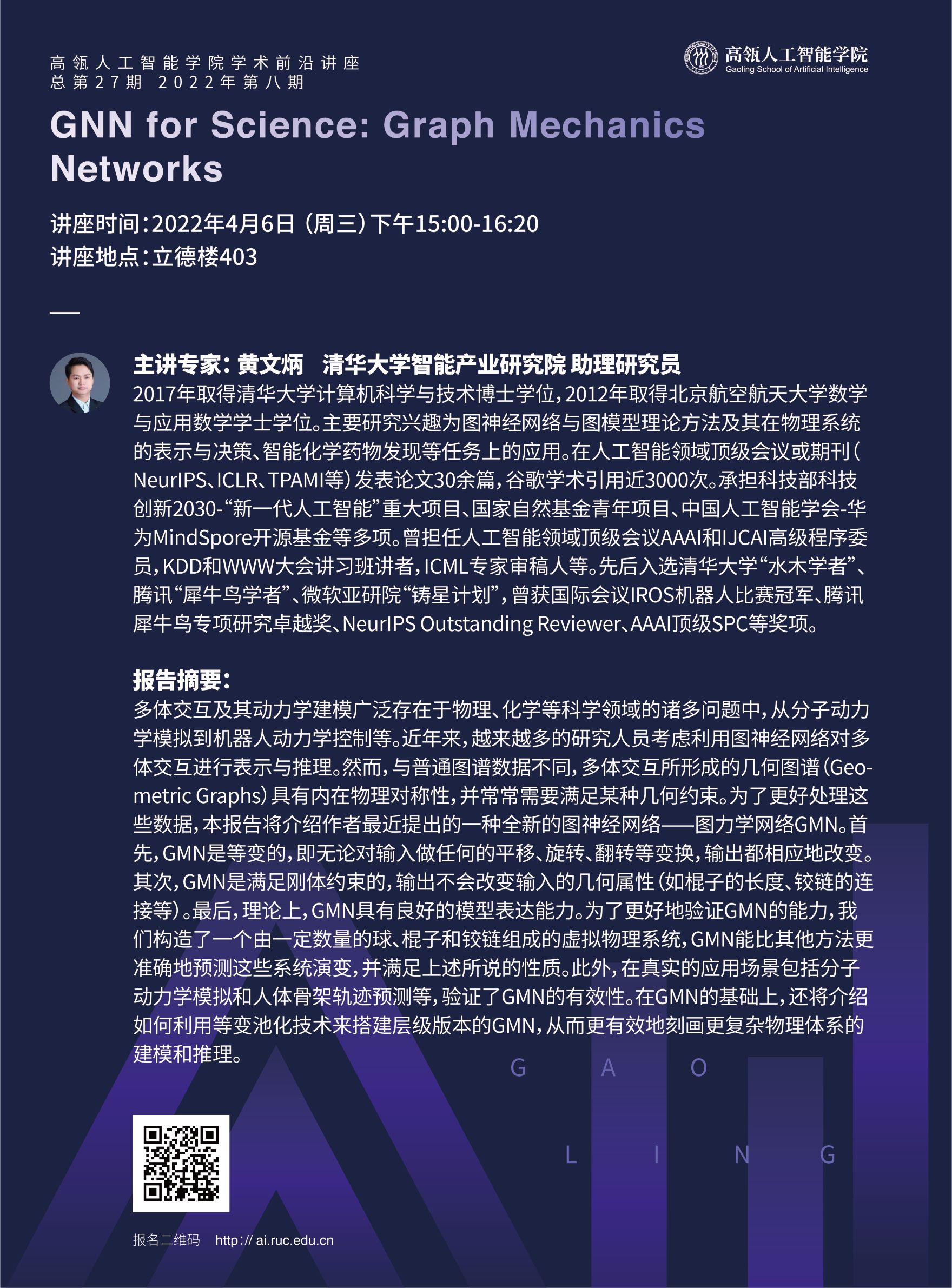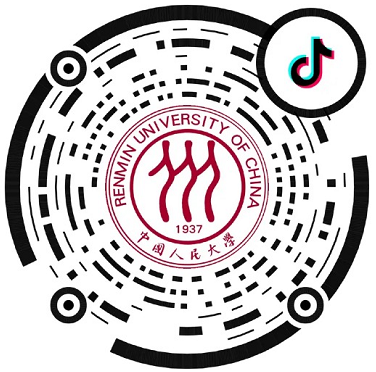学术讲座
学术前沿讲座2022年第八期:GNN for Science: Graph Mechanics Networks
日期:2022-04-02访问量:
讲座时间:2022年4月6日 (周三)下午15:00-16:20
讲座地点:立德楼403
报告人:黄文炳,2017年取得清华大学计算机科学与技术博士学位,2012年取得北京航空航天大学数学与应用数学学士学位。主要研究兴趣为图神经网络与图模型理论方法及其在物理系统的表示与决策、智能化学药物发现等任务上的应用。在人工智能领域顶级会议或期刊(NeurIPS、ICLR、TPAMI等)发表论文30余篇,谷歌学术引用近3000次。承担科技部科技创新2030-“新一代人工智能”重大项目、国家自然基金青年项目、中国人工智能学会-华为MindSpore开源基金等多项。曾担任人工智能领域顶级会议AAAI和IJCAI高级程序委员,KDD和WWW大会讲习班讲者,ICML专家审稿人等。先后入选清华大学“水木学者”、腾讯“犀牛鸟学者”、微软亚研院“铸星计划”,曾获国际会议IROS机器人比赛冠军、腾讯犀牛鸟专项研究卓越奖、NeurIPS Outstanding Reviewer、AAAI顶级SPC等奖项。
报告题目:GNN for Science: Graph Mechanics Networks
报告摘要:多体交互及其动力学建模广泛存在于物理、化学等科学领域的诸多问题中,从分子动力学模拟到机器人动力学控制等。近年来,越来越多的研究人员考虑利用图神经网络对多体交互进行表示与推理。然而,与普通图谱数据不同,多体交互所形成的几何图谱(Geometric Graphs)具有内在物理对称性,并常常需要满足某种几何约束。为了更好处理这些数据,本报告将介绍作者最近提出的一种全新的图神经网络——图力学网络GMN。首先,GMN是等变的,即无论对输入做任何的平移、旋转、翻转等变换,输出都相应地改变。其次,GMN是满足刚体约束的,输出不会改变输入的几何属性(如棍子的长度、铰链的连接等)。最后,理论上,GMN具有良好的模型表达能力。为了更好地验证GMN的能力,我们构造了一个由一定数量的球、棍子和铰链组成的虚拟物理系统,GMN能比其他方法更准确地预测这些系统演变,并满足上述所说的性质。此外,在真实的应用场景包括分子动力学模拟和人体骨架轨迹预测等,验证了GMN的有效性。在GMN的基础上,还将介绍如何利用等变池化技术来搭建层级版本的GMN,从而更有效地刻画更复杂物理体系的建模和推理。
Abstract: Modeling and Reasoning about the interaction and dynamics of Multiple Bodies (MB) is demanded in various scientific problems, ranging from molecular dynamics molding to robot control. Recently, more and more researchers have paid attentions to using Graph Neural Networks (GNNs) for MB representation and inference. However, in contrast to generic graph data, MB is in the form of geometric graphs, which exhibits physical symmetry and commonly should obey certain geometrical constraints. To better cope with these data, this talk will present the proposed Graph Mechanics Networks (GMNs). First, GMN is equivariant, implying that no matter how we translate, rotate, and reflect the input, the output change accordingly. Second, GMN is constraint-aware, and it maintains the geometrical information of the input (the lengths of the sticks, the connections between hinges, etc). Finally, GMN is theoretically demonstrated to be expressive sufficiently. To verify the efficacy of GMN, we construct a simulated dataset consists of the combination of a certain number of balls, sticks, and hinges, on which GMN is able to predict the evolution of the systems more accurately than other methods. Besides, the experiments on two real-world applications including molecular dynamics prediction and human motion capture, support the effectiveness of GMN as well. Upon GMN, we also introduce how to leverage equivariant pooling to build hierarchical GMN, in order to represent systems of more complexity.
检测到您当前使用浏览器版本过于老旧,会导致无法正常浏览网站;请您使用电脑里的其他浏览器如:360、QQ、搜狗浏览器的速模式浏览,或者使用谷歌、火狐等浏览器。
 下载Firefox
下载Firefox



